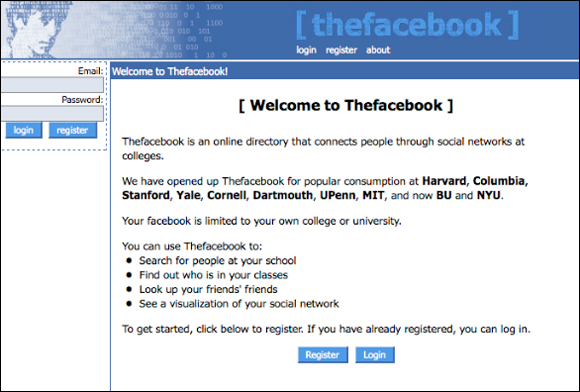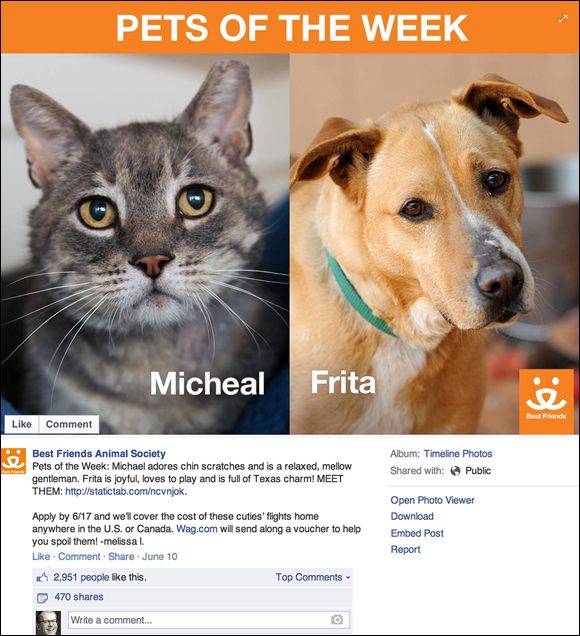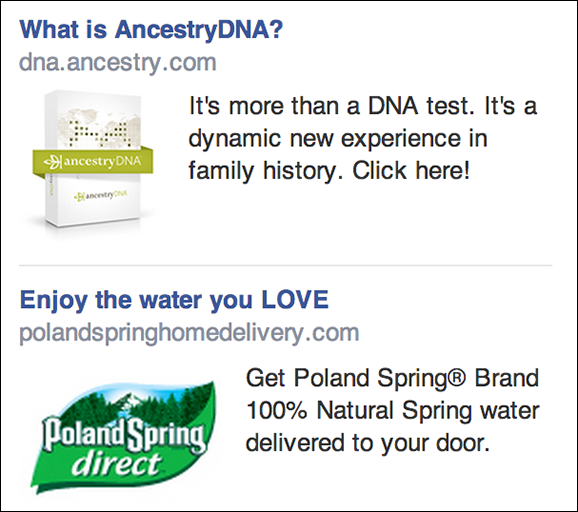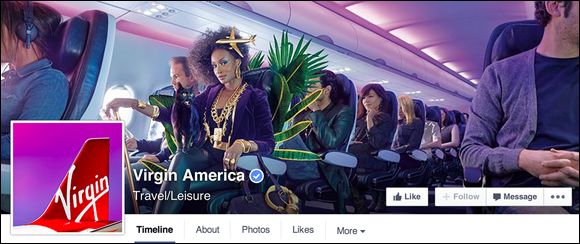Chapter 1
Marketing in the Age of Facebook
IN THIS CHAPTER
 Understanding why Facebook is so popular
Understanding why Facebook is so popular
 Getting acquainted with the marketing potential of Facebook
Getting acquainted with the marketing potential of Facebook
 Determining whether your business needs a Facebook Page now
Determining whether your business needs a Facebook Page now
Facebook is a social media juggernaut! As of the publication date of this book, Facebook has more than 2 billion people worldwide. In fact, if it were a country, it would be the most populated country in the world, ahead of India and China!
In addition to being the largest social network on the planet, it’s the most active. In fact, as of December 2017, 1.4 billion people use Facebook every day! Also, according to a report by eMarketer in 2017, more than half of the population of the U.S. used Facebook in 2016.
Facebook grew at a staggering rate because it fit the needs of both consumers and businesses. However, early in 2018, Facebook changed its algorithm (an algorithm determines the order in which you see items in your Timeline) in response to a major controversy involving the use of automated bots that didn’t represent content from actual users.
Facebook’s goal in changing the algorithm was to encourage more social interaction among friends and family. Consumers use Facebook to connect with friends and share their lives in the form of updates and activity.
Businesses use Facebook Pages to engage customers and prospects; they also run highly targeted ad campaigns for the Facebook community. However, this algorithm change impacts how businesses need to market their products and services. (See details for dealing with these changes in Chapter 3.)
Businesses need to adjust their strategies and tactics to engage users by creating more value. Posting quality content is more important than producing a steady stream of articles and photos. If used correctly, Facebook is still an attractive platform for virtually all industries to achieve concrete business goals such as:
- Increasing brand awareness: Companies of all sizes are reaching Facebook’s massive community with Facebook Social Plugins (for websites), Facebook Ads, and Facebook Pages.
- Launching products: Brands are using Facebook to announce new products with Facebook Ad campaigns and custom apps as part of their overall product launch strategy.
- Providing customer service: Brands also realize that consumers expect to be able to get their issues resolved by contacting the company via its Facebook Page by using Facebook Messenger.
- Selling products and services: Businesses like DODO case (
https://www.facebook.com/DODOcase) and Calm the Ham (https://www.facebook.com/CalmTheHam/) sell their products on Facebook through the use of e-commerce applications that can be added to a Facebook Page.
This book shows you how you can achieve some of these business goals.
In this chapter, we give you an overview of why Facebook has grown so big and how marketers are taking advantage of its potential. We also explain why you need to create a Facebook Page for your business.
What Is Facebook, and Why Is It So Popular?
The social networking site Facebook was launched in 2004 by a kid at Harvard University named Mark Zuckerberg. It started with the name Thefacebook (shown in Figure 1-1) and was available only to Harvard students or anyone else who had a harvard.edu email address. The social network spread quickly throughout Harvard because it was exclusive.

FIGURE 1-1: Screen shot of Thefacebook.com as it appeared in 2004.
Although it was launched as a network for Harvard students, Facebook was eventually made available to students at other universities and finally to anyone with access to a computer. Now, just a few years later, it has become the largest social networking site in history. As of the publication date of this book, Facebook has more than 2 billion users worldwide.
But it’s not just the biggest social networking site in history; it’s also the most active. According to Facebook (http://newsroom.fb.com/company-info), the company has
- 1.4 billion daily active users on average for December 2017
-
2.13 billion monthly active users as of December 31, 2017
According to Zephoria Digital Marketing (
https://zephoria.com/top-15-valuable-facebook-statistics/) - 1.15 billion mobile daily active users for December 2016
- 1.74 billion mobile monthly active users as of December 2016
But now we want to talk about you. If you’re like most people, your mom is on Facebook. Most of your friends are on Facebook. Maybe you reconnected with a long-lost high school friend by using Facebook. Maybe you even met your spouse there.
You may be wondering why Facebook — and not formerly popular Myspace or FriendFeed — got to where Facebook is today. Although an entire book can be written on this topic, it’s worth exploring at least briefly here.
Here are a few reasons why Facebook has blown past all other social networks:
- Facebook has used existing social connections to promote the platform. From Day One, the sign-on process has included inviting anyone you’ve emailed! Its assumption is that if you’ve exchanged an email with someone, there’s a good chance that you have some kind of relationship with that person and may be inclined to invite him or her to join you on Facebook.
- Facebook is heavily covered by mainstream media. Whether it’s a newspaper article about a teacher getting fired for making thoughtless comments about a student or a TV interview with two siblings who were separated at birth but reunited on Facebook, not a day goes by without some kind of mention of Facebook in the news.
- Facebook keeps us connected. Young people famously use Facebook to stay connected, but they’re not alone. One of the fastest-growing segments on Facebook continues to be people over 55. Many of them use Facebook to keep up with their children and sometimes grandchildren.
Understanding the Marketing Potential of Facebook
In the 1950s, this gadget called television exploded throughout American culture. At first, there were black-and-white TVs, and then, toward the end of the decade, there were color TVs in every middle-class living room. As more consumers started watching TV instead of listening to the radio, marketers had to adopt their strategies to the new medium. Successful ad executives and writers took the time to understand how TV fit within American culture. They researched how and why TV became a focal point for families at the end of each day (remember TV dinners?). They researched the ways men watched TV differently from women and which television shows kids preferred on Saturday morning.
Only after this research were they able to create successful TV advertisements. They learned to condense their messages to 30 seconds. They created ads with jingles that imitated popular TV themes and effectively placed their products within popular shows.
In the same way, today’s successful brands must understand how to best use Facebook to market their brands.
If you’re reading this book, there’s a good chance that you’ve heard about how brands like Harley-Davidson and Nutella, as well as thousands of small businesses and nonprofits, are using Facebook to market their products and services.
Through a variety of strategies and tactics, these businesses are tapping into Facebook to achieve a variety of objectives:
- They’re increasing awareness of their brands through highly targeted Facebook Ads.
- They’re getting to know what their customers really want by having daily conversations with them.
- They’re launching new products and services with Facebook Pages and custom Facebook applications.
- They’re increasing new and repeat sales with coupons, group deals, and loyalty programs.
- They’re enhancing the native experience by using such innovations as Facebook Live and the extensive use of video.
Part of the reason why these businesses are successful is that they understand Facebook isn’t just a static website; it’s a way for people to connect and be heard.
Leveraging the power of word-of-mouth marketing
Word of mouth is the most powerful way to market any business. In fact, many studies have shown that consumers are more likely to make purchase decisions based on recommendations from people they know than from a brand’s marketing materials. Each time a user likes, comments on, or shares content on Facebook, that action spreads to his network of friends. This is how “word of mouth” happens on Facebook (see Figure 1-2).

FIGURE 1-2: The Best Friends Animal Society benefits from the word-of-mouth marketing that’s generated by 2,951 likes, 57 comments, and 470 shares.
According to a Nielsen report in 2015, 83 percent of online users in 60 countries trust brand recommendations from friends and family. And this makes perfect sense.
Think about the last time you made a major purchase decision (a car, a TV, or even a contractor). Which influenced you more in that decision: an ad about that product or service, or the experience of a friend who purchased that product or service?
The most powerful aspect of Facebook is the deep ties among users. Large portions of friend networks are based on work relationships, family relationships, or other real-life relationships. Some marketers refer to these connections as strong ties, meaning that they go beyond the boundaries of Facebook. Such connections are in contrast to weak ties — online connections that lack stated common interests or goals.
Think about it this way: Would you be more influenced by the Facebook friend with whom you went to college or the Facebook friend who sent a friend request simply because she met you at a concert this past weekend?
When a Facebook user likes, comments on, or shares a piece of content you publish on your Facebook Page, many of that user’s friends can also see that content. And those friends essentially view those actions as digital word-of-mouth recommendations.
Using marketing tools for all kinds of businesses
Facebook offers marketers several unique ways to interact with customers and prospects, including the following:
- Facebook Pages, Groups, and Events: These tools are free for any business and have the very same social features (including News Feeds; comments; and the capability to share links, photos, videos, and updates) that more than 2 billion people use to connect with their friends on Facebook. In other words, Facebook allows businesses to connect with customers in the same way that these customers connect with their friends. This business-is-personal paradigm has helped Facebook transform the way companies market themselves.
- Facebook Social Plugins for websites: Facebook offers several free plug-ins for websites that allow your website visitors to share your content with their Facebook friends. The Comments plug-in, for example, lets people comment on content on your site by using their Facebook profiles. When they do so, a story is generated in their friends’ News Feeds, exposing their friends to your website content.
- Facebook Ads: Facebook Ads, which can be purchased on a cost-per-click (CPC) or cost-per-impression (CPM) basis, are increasingly popular because they enable marketers to reach as narrow or as wide an audience as desired, often at a fraction of the cost of other online media outlets, such as Google Ads. And because Facebook members voluntarily provide information about their personal interests and relationships, Facebook has a wealth of information about its members that advertisers can easily tap. Additionally, Facebook partners with a few third-party consumer data companies such as Acxiom and DLX to provide information about purchasing behavior and income. (See Figure 1-3.)

FIGURE 1-3: Facebook Ads like these are an extremely cost-effective way to target your exact customer based on a variety of factors.
The new Facebook marketing paradigm is rewriting all the rules. As marketers scramble to understand how best to leverage this powerful new communications channel, those who don’t jump on board risk being left behind at the station.
Understanding Why Your Business Needs a Facebook Page
The best (and easiest) way for you to establish a presence for your organization on Facebook is to create a Facebook Page.
A Page serves as a home for your business, as well as a place to notify people about upcoming events; post offers; provide your hours of operation and contact information; display news; and even display photos, videos, text, and other types of content.
Pages also allow you to carry on conversations with your customers and prospects, providing a new means of finding out more about what they want from your business.
Facebook Pages are visible to everyone who’s online, regardless of whether that person is a Facebook member. This allows search engines, such as Google and Microsoft’s Bing, to find and index your Page. This can improve your company’s positioning in search results on those sites.
Here are a few essential components that make Facebook Pages the core marketing tool for all kinds of businesses:
- The Publisher: The Publisher serves as the central component of a Page and allows you, the Page administrator (admin), to post status updates and links, and to upload content such as photos, videos, and links. These actions generate updates and display as stories on your fans’ News Feeds.
- Like button: When someone clicks your Facebook Page’s Like button, she’s expressing her approval of your Page. That action creates a story in her News Feed, which is distributed to her friends, who are then more likely to like your Page because they trust her recommendations.
- Cover image: The cover image is the large image at the top of every Facebook Page. It’s the thousand words that express what your business is about!
- Views and applications: Facebook Pages include various views (sometimes called tabs), including Photos, Events, and Videos. When Facebook users click the view icons on your Page, they can see all the content for that view (see Figure 1-4). You can also add a variety of apps to customize your Page, such as contest and promotion apps, or apps that display Twitter and Instagram content.
- Message feature: All Pages include an option to allow Facebook users to send the Page administrator private messages (see Figure 1-4). Facebook members use a similar feature to send private messages to their friends. The message featured on your Page (if you choose to use it) allows you yet another opportunity to connect more personally with your customers and prospects. With the advent of chatbots (automated messages using artificial intelligence), you can engage users who can immediately get answers they need.

FIGURE 1-4: Facebook Pages include various views and apps that users can explore when they visit your Page.
Attracting new fans who are friends of customers
Marketers can post updates — also called stories — to engage fans in relevant discussions. When these updates appear in their fans’ News Feeds, they can like, comment on, and share that story, which in turn is seen by their friends.
When nonfans see those stories in their News Feeds, they can also comment on or like your Page story and even visit your Page directly to engage with other stories and/or become a fan or a connection of your Page. Additionally, when they mouse over the name of your Page in their News Feeds, a small pop-up window called a hovercard appears. In this card, they can also like your Page and see more detailed information about your business (see Figure 1-5).

FIGURE 1-5: Facebook users can like your Page from your hovercard by hovering their mouse pointers over the name of your Page in their News Feeds.
Changing first-time customers into repeat customers
In marketing, getting people’s attention and keeping it is paramount for success, and things are no different on Facebook. This principle applies to your current customers in addition to your prospects.
After customers have liked your Facebook Page, it’s your job to nurture and grow your relationships with them by providing added value. In other words, you must use your Facebook Page to enhance the benefit that your customers get from doing business with you. You do this by continually posting exciting and relevant content on the Page, which we discuss in Chapter 7. A car dealership, for example, can post auto-maintenance or travel tips — in addition to live training, discounts on oil changes and other services — on its Facebook Page to turn a first-time customer into a lifetime customer.
 Think about this: Most smartphones and tablets are preloaded with a Facebook app or at least have features that allow for Facebook sharing.
Think about this: Most smartphones and tablets are preloaded with a Facebook app or at least have features that allow for Facebook sharing. All Facebook users have a Facebook profile, which includes a main image, or avatar; a Timeline listing their latest activities and comments from friends; and a sidebar that includes links for photos, personal information, and other apps.
All Facebook users have a Facebook profile, which includes a main image, or avatar; a Timeline listing their latest activities and comments from friends; and a sidebar that includes links for photos, personal information, and other apps.